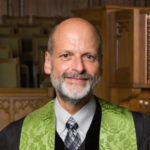 Dear friends,
Dear friends,
This Sunday in the 11:00 am Sanctuary Service, live-streamed from our beautiful FUMCFW sanctuary, I will begin a new five-part series following the passages of scripture in the lectionary. The Sundays after Epiphany focus on discipleship — the practice of following Jesus. During this series I want us to think about what it means to be a follower of Jesus, so I’m calling the series Followership.
I thought I might be using a made-up word, but I decided to look it up in the dictionary. To my surprise, I discovered that it is a word found widely in dictionaries, although it is a relatively new word, as words go. The first known use of the word was only 108 years ago. Followership. In the context of our faith, it is pretty much synonymous with discipleship, but it has the advantage of reminding us of the meaning of that term.
We’ll begin the series on Sunday focusing on learning as an important part of our followership. We are students no matter what our age or our situation in life. If we claim the name “disciple” of Jesus Christ, then we have also claimed that we are students of Christ because the word “disciple” does mean “student, one who follows, one who sits at the feet of a teacher.” To say that we are disciples of Christ means that we are students of Jesus Christ. Following means learning.
Think about those first disciples. What did they do? For three years they went around following Jesus, watching the way he lived, watching how he touched people and accepted people and loved people and healed people and brought wholeness to people, listening to the words about how they were to live, what they were to do, about the graciousness of God, about God’s call to be people of God. For three years they were students but their discipleship didn’t end there. They continued to be students as they grew in the knowledge and love of Christ. Learning is life-long.
In our scripture reading for Sunday we have John’s account of Jesus beginning to call his disciples and we’ll focus on Nathaniel. When Philip brought him to meet Jesus, Jesus indicated that he knew who he was.
Nathanael asked him, “Where did you get to know me?”
Jesus answered, “I saw you under the fig tree before Philip called you.”
It’s easy for us today to read past that phrase “under the fig tree.” That it was a fig tree holds no particular significance for us. It could have been a live oak tree or a pine tree and been just as significant for us. But in the minds of the people of that place and that time, “under the fig tree” had a great significance because the Rabbis taught that the best place for learning, the best place of reading Torah, discussing the teachings of God, and meditating and praying is “under the fig tree.” The best place is under the wonderful shaded, cool canopy of the fig tree with the fragrance of the fruit. It’s a great place to study. And so “under the fig tree” came to be known as an expression synonymous with study and meditation and learning and discussing and sharing.
I remember some 15 years ago when we were in Israel, Jim Fleming, an archaeologist and Bible scholar, was our guide and teacher on the tour. He took us to a fig tree. Now, I had seen fig trees many times before. As a child, I had helped pick figs from Miss Viva Gray’s fig trees. We had a nice fig tree in the back yard of our first home. But, this tree near Caesarea Philippi was the largest fig tree I’d ever seen. We gathered under that fig tree. It was a hot day, but under the fig tree it was cool. There was a breeze blowing and it was the season when there was fruit on the tree so it smelled like Fig Newtons under there. It was wonderful. We stood there for a moment and he said, “Do you see know why the rabbis said this is the best place to learn, to study, to discuss the teachings of God?” And we did see — and felt and heard and smelled why.
And so Jesus had seen Nathanael under the fig tree. Here is someone who is a learner and he called him to be a disciple because that’s what disciples do. Disciples learn. And disciples learning is lifelong. It is an important part of our followership.
What does that mean for us today as followers of Jesus? What does it mean for us as a church — a faith community?
Grace and Peace,
![]()
Dr. Tim Bruster
Senior Pastor
John 1:43-51 (Common English Bible)
43 The next day Jesus wanted to go into Galilee, and he found Philip. Jesus said to him, “Follow me.” 44 Philip was from Bethsaida, the hometown of Andrew and Peter.
45 Philip found Nathanael and said to him, “We have found the one Moses wrote about in the Law and the Prophets: Jesus, Joseph’s son, from Nazareth.”
46 Nathanael responded, “Can anything from Nazareth be good?”
Philip said, “Come and see.”
47 Jesus saw Nathanael coming toward him and said about him, “Here is a genuine Israelite in whom there is no deceit.”
48 Nathanael asked him, “How do you know me?”
Jesus answered, “Before Philip called you, I saw you under the fig tree.”
49 Nathanael replied, “Rabbi, you are God’s Son. You are the king of Israel.”
50 Jesus answered, “Do you believe because I told you that I saw you under the fig tree? You will see greater things than these! 51 I assure you that you will see heaven open and God’s angels going up to heaven and down to earth on the Human One.”[a]
